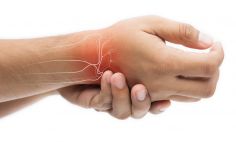Health Topics

5 common autoimmune diseases
What you need to know
Some autoimmune diseases target specific organs or tissue, while others attack multiple tissue or organ systems throughout the body. Here’s what you need to know about five common conditions.
Lupus
A chronic (long-lasting) disorder that causes damage to multiple areas of the body.
What’s affected?
Connective tissue in almost any organ or system of the body.
Who can develop it?
Anyone can develop lupus, but it’s most common in:
- Women
- People between ages 15 and 45
- African Americans, Native Americans, Native Alaskans, Native Hawaiians, and people of Asian descent
- People who have a family member with lupus or another autoimmune disease
What are the symptoms?
Common symptoms include:
- Joint pain or swelling
- Muscle pain and weakness
- Fever
- Sun sensitivity
- Red rash (such as “butterfly” rash on the nose and cheeks)
- Swollen lymph nodes
- Fatigue and general malaise (feeling unwell)
- Sores in the nose and mouth
Other symptoms depend on what parts of the body are affected.
Sjögren’s syndrome
A chronic disorder that causes damage to the glands that create moisture and lubrication (particularly tears and saliva).
What’s affected?
Primarily the eyes and mouth, but it can also affect parts of the body like joints, lungs, and muscles.
Who can develop it?
Most people with Sjögren’s syndrome are women. It is usually diagnosed after age 40.
What are the symptoms?
The most common symptoms are dry eyes and mouth, pain in the joints or muscles, and severe fatigue. Other symptoms may include itchy skin, nasal irritation and nosebleeds, and dry cough.
Rheumatoid arthritis (RA)
A chronic disorder that causes damage to joint tissue.
What’s affected?
Primarily targets the body’s joints (usually on both sides of the body) and the tissues around them. It may also affect other systems of the body such as skin, eyes, lungs, heart, and blood vessels.
Who can develop it?
RA is more common in women than in men. The risk increases as you get older, but you can develop it at any age.
What are the symptoms?
The most common symptoms are swelling, pain, and stiffness in joints (typically in the wrists, hands, feet, spine, knees, or jaw).
RA causes swelling in the lining of the joints, which can lead to harmful structural changes in the bones and joints over time.
Psoriasis
A chronic disorder in which an overactive immune system causes skin cells to multiply and rise to the surface of the skin too quickly.
What’s affected?
Skin.
Who can develop it?
Anyone can develop psoriasis, but adults have it more often than children.
What are the symptoms?
Itchy or sore patches of thick, red, scaling on the skin.
Psoriatic arthritis
A chronic autoimmune form of arthritis that affects the skin and joints. It can worsen over time.
What’s affected?
Skin and joints.
Who can develop it?
Psoriatic arthritis is more common in adults than in children. Most people who develop psoriatic arthritis already have psoriasis. It can be triggered by stress, physical trauma, or infections.
What are the symptoms?
Common symptoms include:
- Pain, stiffness, and swelling in joints (on one or both sides of the body)
- Pain and swelling in other parts of the body such as hands, feet, and low back
- Itchy or sore patches of thick, red, scaling on the skin







